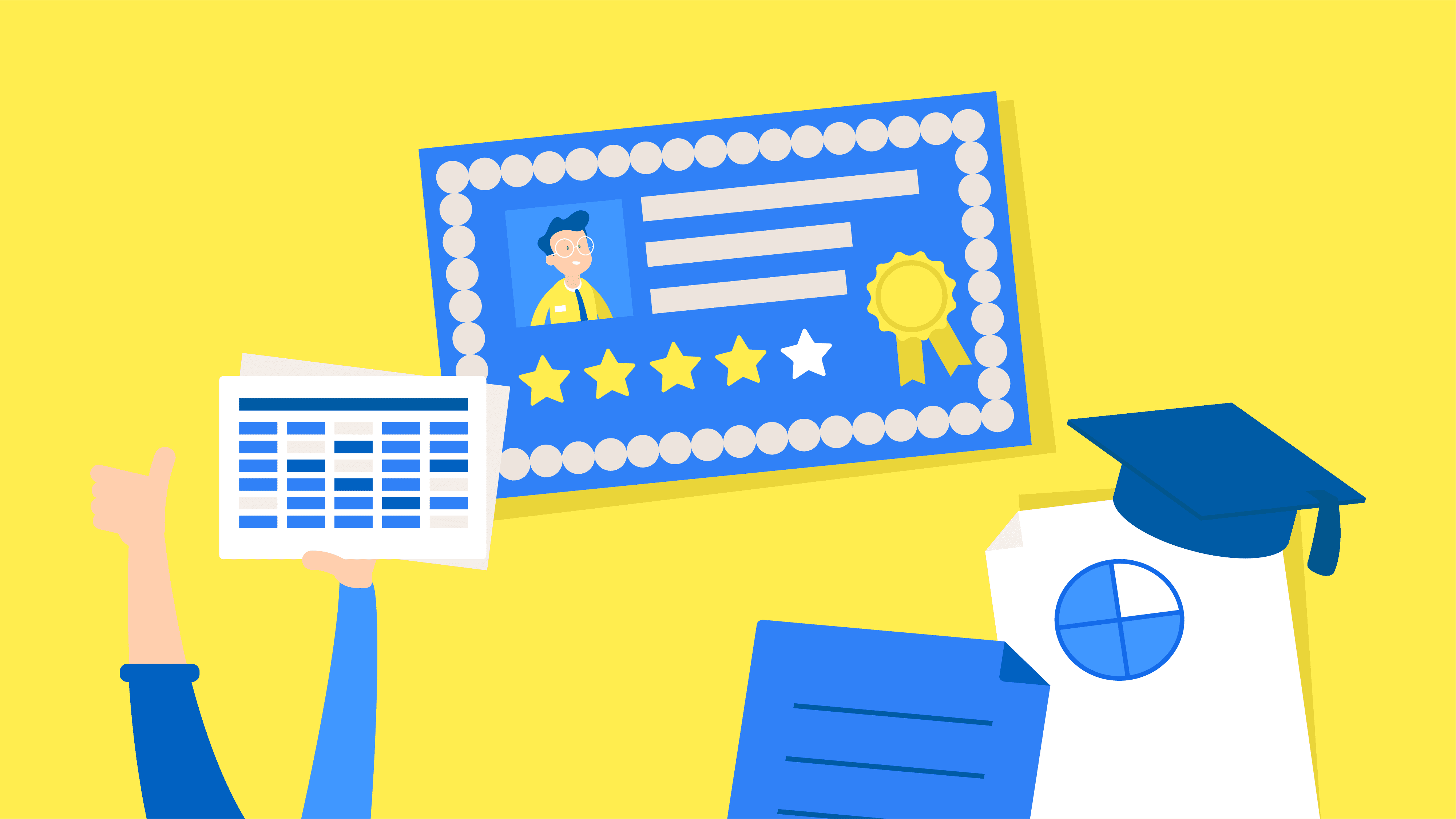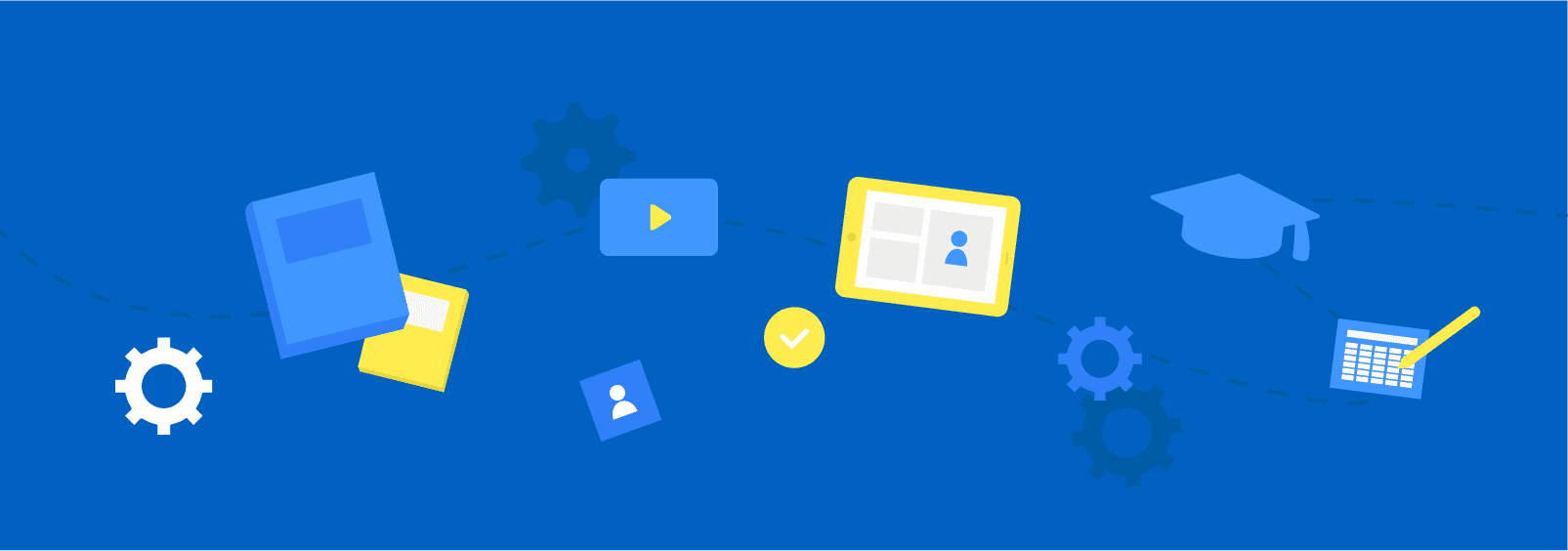Why placing continuous learning at the heart of your organization is essential
In this article we discuss continuous learning. It explores the importance of ongoing skill development, strategies for fostering a culture of continuous learning, and its benefits for individuals and organizations.

Continuous learning is the remedy to stop stagnation. It is the process of tracking and developing the skills of every individual within a company, which in itself is a great thing. You want to have your teams working to the best of their ability, right?
Businesses that focus their efforts on their employees’ development are businesses that inspire. A culture of learning can be a huge motivating force that keeps the workplace exciting, and a place people want to be. Without challenges, boredom can easily set in: boredom at work, boredom with the product, and most fatally, boredom with the brand.
Continuous learning within an organization Copied
If a business wants to stay on top of its game, it needs to be proactive and forward-thinking. As the marketplace is dynamic and constantly evolving, businesses need to stay ahead through innovation and development. It needs to continually train and teach its workforce to ensure that they have the skills to meet its goals. Continuous learning, then, is the engine that drives success.
The three major benefits for the organization
Every individual within a company has a wealth of talent that can be tapped into. And with maybe only a few exceptions, every business will ground to a halt without its workforces turning the cogs. Continuous learning is a way to ensure that your teams are at their optimum level and that they are engaged and driven. The benefits are great, here’s why:
- Empowering – employees who feel valued and an asset to the company will be more driven and committed to the organization.
- Capital retention – employees are more likely to want to stay working with the company. This reduces pricey onboarding costs.
- Skilled workforce – a focus on learning and development will naturally improve the skills and competencies of your employees.
The three major benefits for the individual
Continuous learning is also great for individuals, as they are working in a culture of learning where personal development is a thing nurtured. There will be improved job satisfaction, higher retention rates, and an all-around improved sense of wellbeing. Here’s why:
- Career development – employees who are continuously learning are more driven and more committed to career growth within their current company.
- Awards – continuous learning often involves taking part in courses and programs. Employees will be able to build a portfolio of their achievements.
- Value – by feeling empowered, employees will naturally feel valued. The effect of this will be less stress, less tension, and improved wellbeing.

The three stand-out moments of continuous learningCopied
Data management is a crucial element of continuous learning and should begin as early as possible. Knowing what skills an employee has upon arrival into the company sets the benchmark for all future training. Even though continuous learning should be ongoing throughout an employees’ career, there are three stand-out moments of when training activities are heightened:
Onboarding
Onboarding a new employee requires training. There is no exception to this rule. Regardless of the skills and competencies that an individual may bring to a company, they’ll always need to get a handle of all the new processes and systems. During this initial training stage, it is handy to start tracking skills, so you can easily see where developments can be made.
On-the-job learning
It’s a way to make sure people make as much progress, as quickly as possible. It places emphasis on doing rather than watching. It is a handy way to keep teams engaged as they take on new projects or processes. Even if changes haven’t been made on the shopfloor, on-the-job continual learning sharpens your tools! If certain processes aren’t in the daily operations, they can be easily forgotten.
Managerial training
By investing in training and incentivizing employees by having a culture of learning, even more of your workforce will be looking at their personal growth. The effect of having employees committed to developing their skills is a workforce that is not only dedicated to their own growth but also their company’s.
Learning management and training systemsCopied
The big question now is: who to choose for your training needs? In-house training is always an option, but it is unlikely to be sufficient and cover all bases that you and your teams need. Luckily there are many learning management and training systems out there. Perhaps too many to choose from! Trying to decide which e-learning is best for your business can be a difficult decision. To narrow the list down, here is a list of our favourite providers:
Cornerstone
Cornerstone helps organizations and individuals realize their potential at work. It does this by providing personalized learning, modern training content, and development-driven performance management.
Flowsparks
Flowsparks provides e-Learning services and assists in the development of online learning programs. By creating “flow” – flexible learning in an online world – it helps clients develop skills and grow as an organization.
Moodle
Moodle is such an expansive provider that it has its own internal network that covers all bases for all needs. It’s normally the go-to provider for the education sector. The company’s ethos is: “collectively, we empower educators to improve our world.”
aNewSpring
aNewSpring has versatility at its core. It is an e-learning platform that can be adapted to whatever your needs are. The company’s goal is to inspire innovation and to create a brighter future.
Data management and skills analysisCopied
Whichever way you decide to roll out continuous learning in your company, you’ll always be faced with the challenge of data management. As skills are acquired and individuals grow, you’ll need to track and keep a record of their progress. The more visual the data, the easier it is to work with. Skills matrices are a handy tool for this, as they turn data records into clear and manageable information.
The benefits of continuous learning will be felt at both the organizational and the individual levels. Investing in training and development will stoke inspiration in your teams and help drive your company to your goals. Getting a good handle on rates of development and knowing where learning needs to be implemented is a way to stop any potential skill leakage within your organization.
Book a free demo to see how AG5 could help you track your skills.

